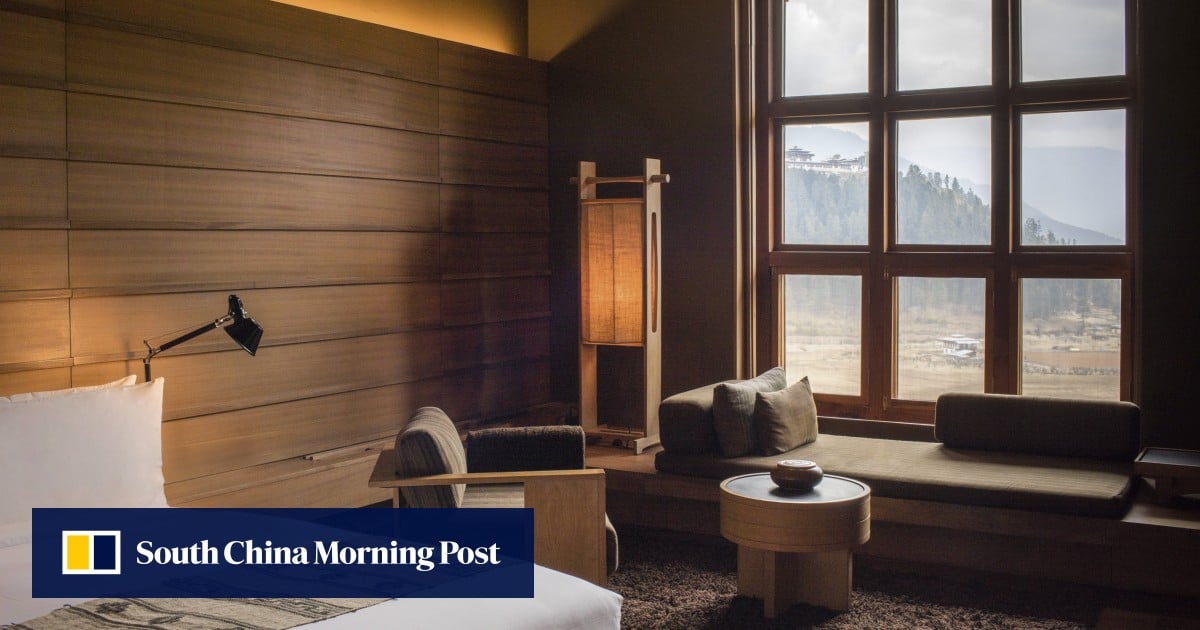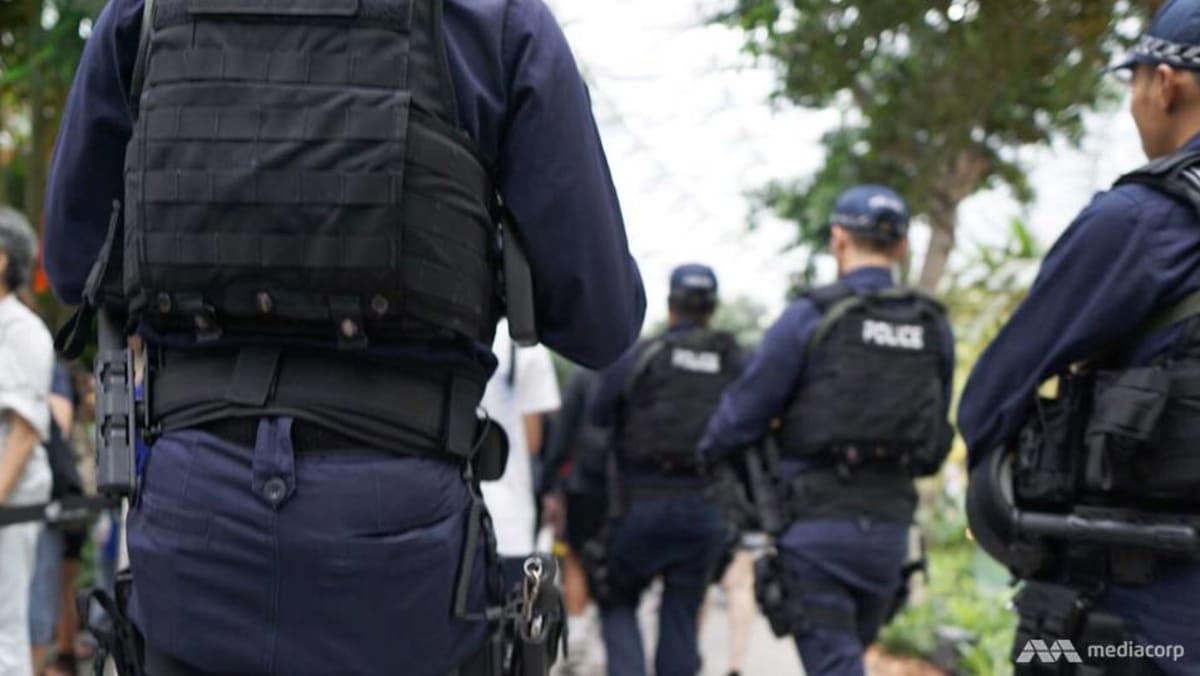You can sign up to do a circuit with a particular company, but canny travellers do it differently. Each brand has one or two outstanding properties, and there are a handful of memorable independently owned lodges.
To help you find the right place to rest your head, here are our top picks in every location.
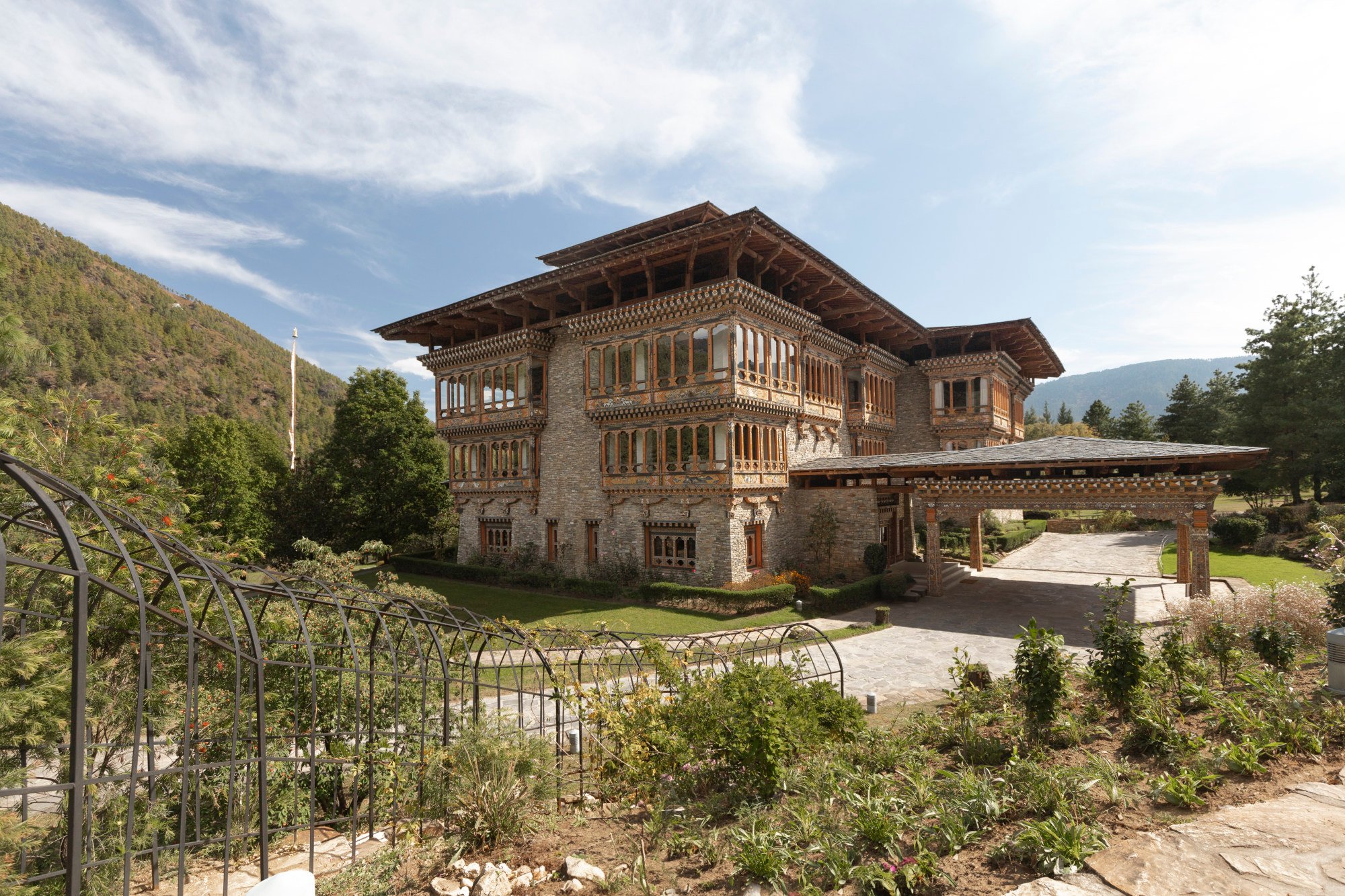
Thimphu: soft landing
Bhutan’s capital is not exactly a bustling metropolis. With a population of less than 150,000, it is reputedly the world’s only capital city without a traffic light. (At the city’s busiest intersection, a white-gloved policeman keeps the traffic flowing.)
It is worth starting your trip with a night or two in Thimphu to recover from the flight, adjust to the altitude – the city sits at 2,300 metres (7,500 feet) above sea level – and visit attractions such as the country’s tallest Buddha statue, the 51-metre-tall Dordenma Buddha.
The new 400km Asian trail that will be one of world’s most sustainable
The new 400km Asian trail that will be one of world’s most sustainable
Perhaps the best reason to spend a night or two here, however, is the chance to stay at Six Senses Thimphu.
“It’s the most beautiful lodge in the country,” a rival hotelier cheerfully tells me, and he’s not wrong.
A hairpin road, the first of many you will encounter in Bhutan, takes you up to where the lodge sits high above the valley.

Step into the double-height reception lounge and you are greeted by a wide-angle view of the mountains that rim the valley; you will find the same view in your sprawling suite, with its clean wooden interiors.
As you would expect from Six Senses, there is a strong emphasis on wellness, from the green shots you are served at breakfast to the yoga and meditation sessions, the steam room and sauna, and, of course, the spa treatments.
Menus include both local and Western options – the hearty Tuscan bean stew is the breakfast to order if you are heading out on a hike – but it is the resort’s palatial architecture, its water pools reflecting elaborately carved pavilions, that ensures a stay here will linger in the memory.
Punakha: subtropical bliss
It can take up to three hours to drive from Thimphu to Punakha following the mountain road over the 3,100-metre-high Dochula Pass, where, on a clear day, you can drink in a stunning Himalayan panorama.
Arriving at Punakha, which sits at 1,200 metres, feels like arriving in a different world. The subtropical microclimate, imposing Dzong (a combination fortress, monastery and administrative centre) and lush landscape of banana trees and rice paddies fed by the fast-flowing Mo Chhu (Mother River) and Po Chhu (Father River), have made it an essential stop on any itinerary.
Many of the big brands are represented here but two of the newer properties are particularly appealing.
Suddenly abandoned or gradually emptied, 9 of the world’s ghost towns to see
Suddenly abandoned or gradually emptied, 9 of the world’s ghost towns to see
Best known for its African safari camps, andBeyond has launched its first Bhutan property here, andBeyond Punakha River Lodge, a luxurious tented camp by the Mo Chhu whose murmuring lulls you to sleep.
There are plenty of thoughtful touches throughout the camp: the brass-clad tub in each tented suite is positioned beneath a skylight for stargazing, while a hatch lets your butler deliver tea and biscuits each morning before you rise.
The spa is small but stunning and for those wanting to get active, rafting, kayaking and biking are all available.
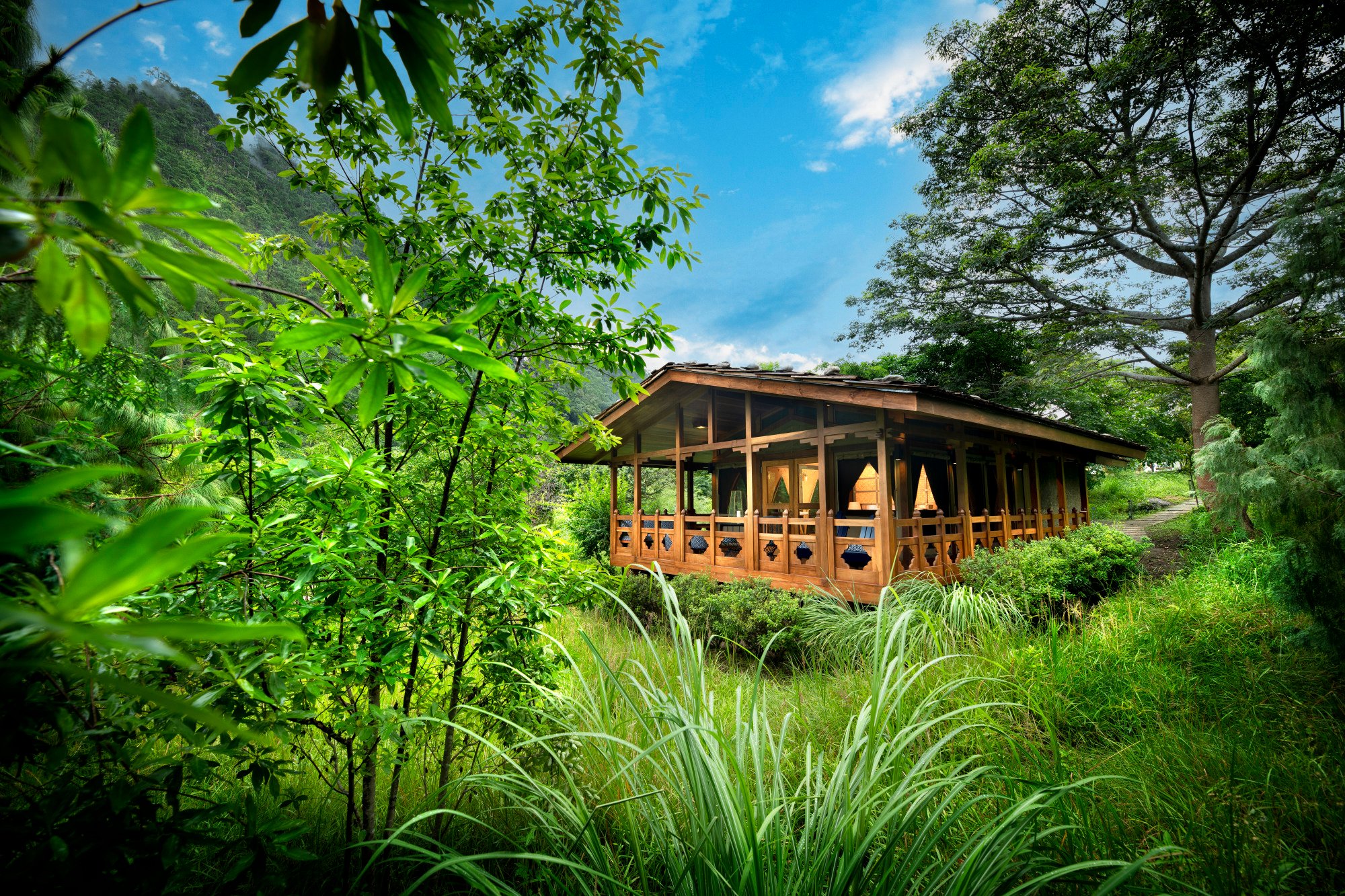
On the far side of the river is another, very different tented camp.
Pemako Punakha is the valley’s first locally owned high-end property, one that lodge manager Amar Deep Chhetri describes as a “hospitality pilgrimage”. Arriving guests cross a prayer flag-covered footbridge to get to the far side before walking (or taking an electric buggy) to the hotel.
A boldly designed lobby, courtesy of maximalist designer Bill Bensley, leads to a long corridor that cycles through the holy colours of Buddhism.

The tented suites are scattered across 200 metres of vertical slope but there is no need to strain your calf muscles – your butler will deliver you from one spot to another by buggy.
Decorated in the orange, yellow and white of the national flag, each one is kitted out with its own pool and eye-catching elements including beds big enough to sleep four.
Guests are encouraged to delve deep into Bhutan’s spiritual traditions, courtesy of a resident lama who blesses you on arrival and can also lead you in meditation classes.
Gangtey Valley: blessed stay
No guests are welcomed more warmly in central Bhutan’s Gangtey Valley – also known as Phobjikha Valley – than the black-necked cranes.
These endangered birds are a symbol of good luck: their arrival here each November from the Tibetan Plateau is said to ensure a good potato harvest, bringing prosperity to the valley.
If you want to see the cranes, winter is the time to come to Gangtey, around two hours’ drive from Punakha, and the best place to stay is Amankora Gangtey.

Perhaps the loveliest of Aman’s five lodges in Bhutan, this eight-suite property has a pared-back beauty that blends Bhutanese traditions with Aman’s traditional light touch.
That means whitewashed walls and timber ceilings, and cushioned window seats that nestle against the large wood-framed windows.
The uncluttered interiors mean there is nothing to distract from the views across the pine forests and farms that stud the glacial valley.
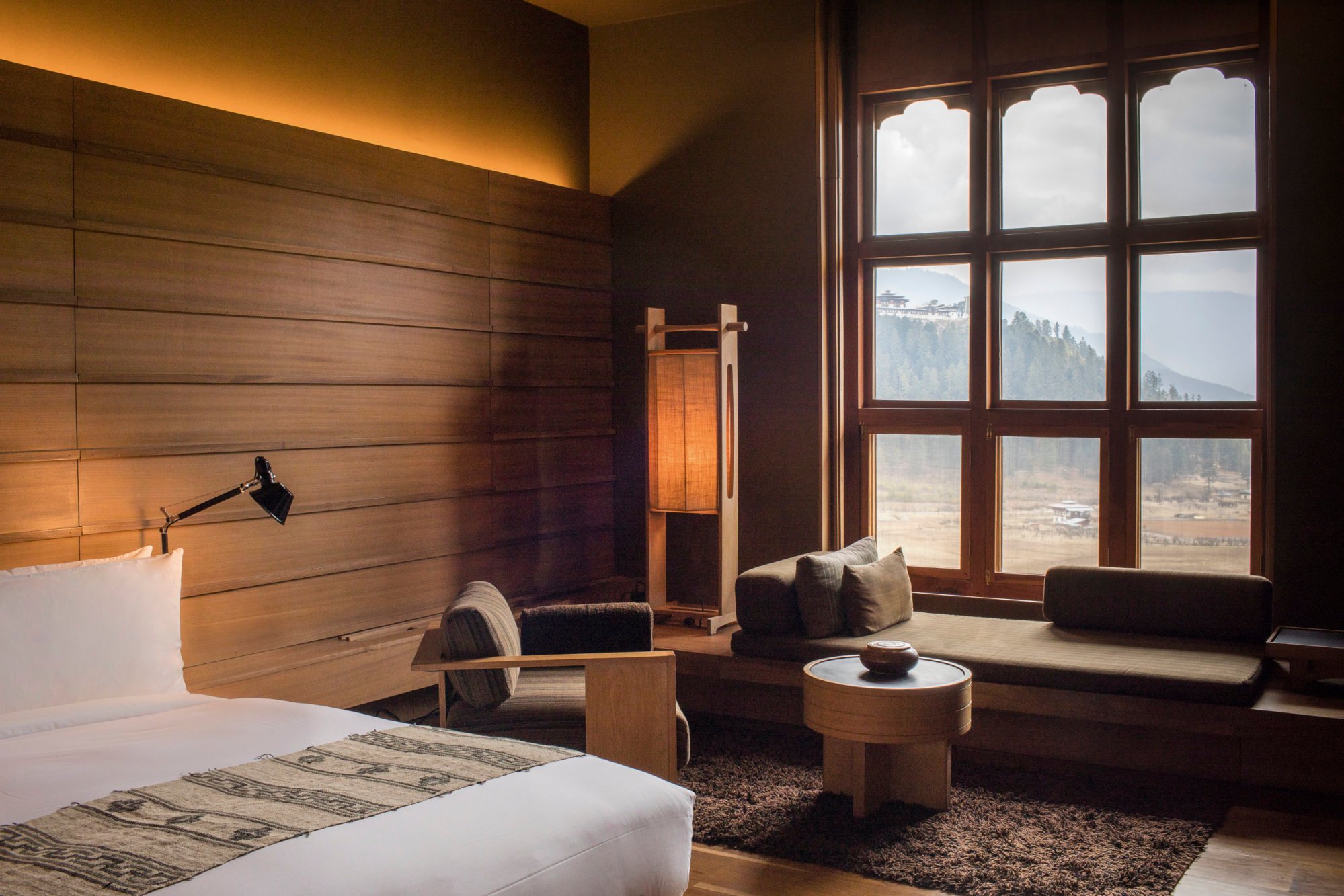
Amankora’s chefs showcase local ingredients such as yak – braised, stuffed into home-made ravioli and served with a sherry jus – and the celebrated trout from the Haa Valley, served as fish cakes accompanied by a mint salad.
Amankora also offers an extensive range of activities, from audiences with Buddhist monks to hikes to suit any fitness level. (A walk through a rhododendron forest, typically in bloom from March to May, is a heady experience.)
However, some of the most memorable activities take place at the lodge itself. They include the hot stone massage, considered by some to be the best in the country, and the potato shed dinner. Despite its somewhat unpromising moniker, this private dinner illuminated by countless candles is a magical experience.
Paro: the big finish
If you like to pick up souvenirs, Paro’s craft shops are also your best choice.
The closest hotel to the airport, just a 10-minute drive away, is Como Uma Paro. This surprisingly tranquil hilltop spot, built around a reconstructed home, has generously sized suites decorated with hand-painted Bhutanese designs.

Along with the famous Como spa treatments, the highlight here is the food. Excellent Indian and Western options are available – everything from healthy choices such as a killer chopped salad to a superior club sandwich and comfort food such as fish and chips – but it is the Bhutanese menu that really shines.
Como Uma Paro has the best Bhutanese chef in the country, Tshering Lhaden, at least according to Bhutan’s king, who regularly calls on her services.
If you want to tackle the Tiger’s Nest trail – best undertaken first thing in the morning – but hate rising early, the Zhiwa Ling Heritage Hotel is hard to beat.
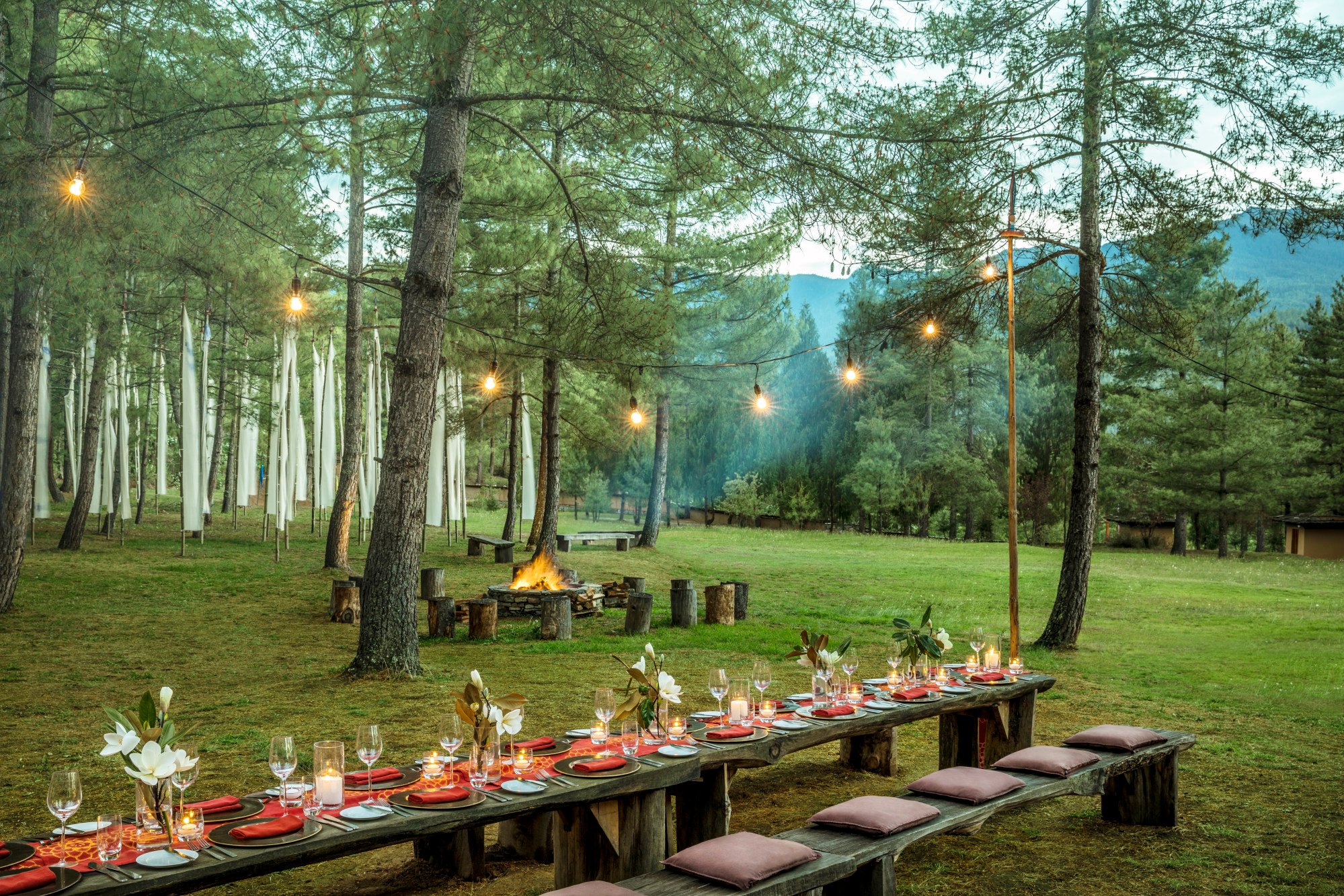
This locally owned property, just 10 minutes from the trailhead, is a celebration of Bhutanese heritage, with a squadron of artisans having been engaged in its creation. Just carving and painting the woodwork occupied 60 workers for three years.
Like most of Bhutan’s hotels, Zhiwa Ling offers generously sized rooms and suites but its unique selling point is the two-bedroom Royal Raven Suite, which comes complete with its own 300-year-old shrine.
Paro’s other top option is the Bhutan Spirit Sanctuary, which lies at the end of a dirt track high above town.


The arrival experience is memorable: after walking through a traditional meditation labyrinth and spinning a series of prayer wheels, you enter the property across a gold bridge and light a butter lamp, sending another prayer to heaven.
A stay here is all about slowing down, with the all-inclusive rates covering a daily wellness treatment. The tea bar has a 20-strong menu of herbal concoctions (yes, you can have English breakfast if you must), while dinner is available only in degustation format.
If you are in a hurry, the obliging staff will ensure each compact course is delivered swiftly.

